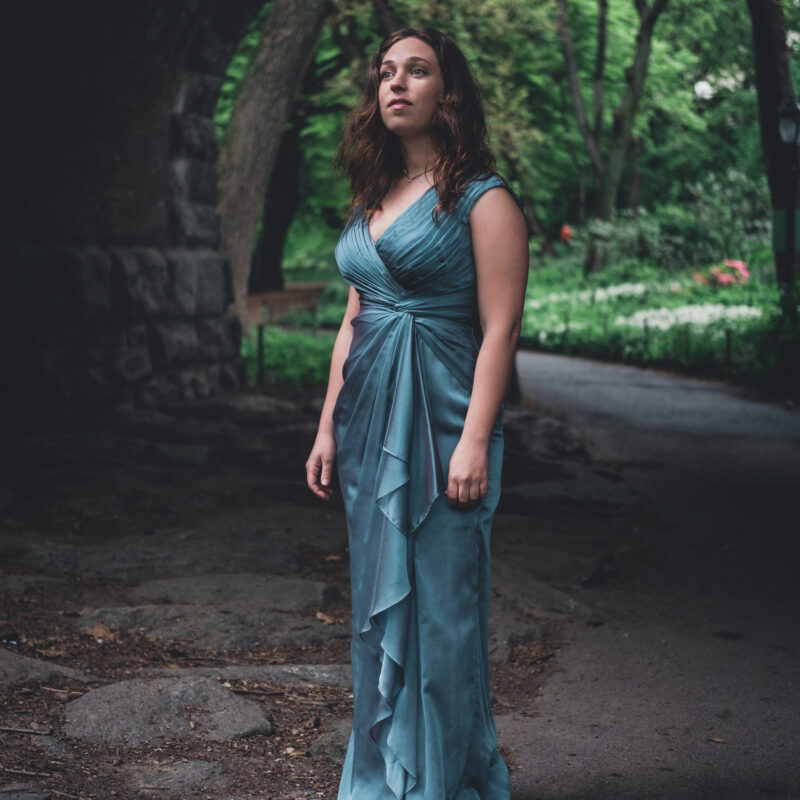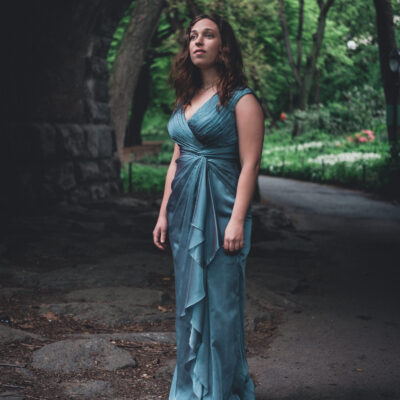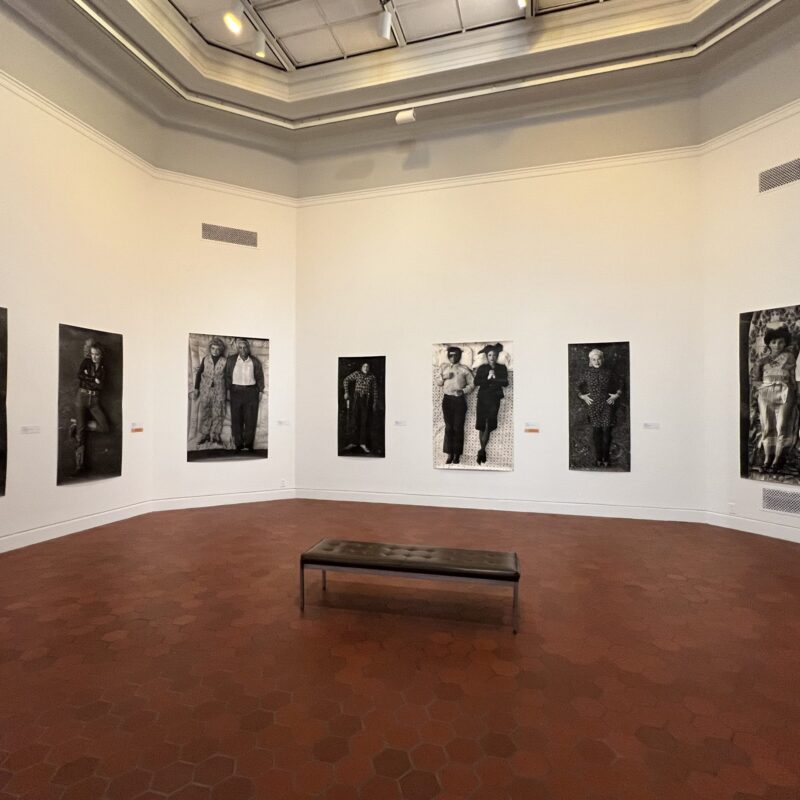Gilded beams of light break through dark clouds as an octopus wraps its tentacles around the curved tusks of two woolly mammoths. A flaming mandrill pushes his finger into the black earth and ignites a pool of gold. A small herd of ancient bulls gathers in darkness around a burning bush.
An aura of myth and mystery radiates from these small worlds, evoked by visual artist Clay Witt and his meticulous, multilayered process.
“It’s an imaginary landscape where things have fallen apart,” says Witt. “I don’t know whether I would call it pre-human or post-human, but I never put people in my work. It’s always animals or phenomena.”
Witt’s work explores the intersection of mythology and biology, the way that core imagery can provoke different stories while maintaining universal mystical appeal.
“I also like the idea of little cabals, little groups of animals, off in the woods at night, planning. Doing things when we’re not around,” he says.
His landscapes are massive, empty, lonely spaces punctuated by physically contrasting elements, like fire on water, dark wind and light air, the beatific peace of an elephant being consumed by phoenix flames.
Flames and clouds of gold, says Witt, are “a holy numinous signal from god knows where. It’s what makes things preternatural. It’s my visual semiotic announcement of the fact that this is something otherworldly.”
The reference, he adds, isn’t his—it’s a notion he sees echoed across many cultures. “In Islam it is flames around the heads. I always thought of the fire as just this kind of liminal thing. The Zoroastrians believed that the fire was a messenger that carried prayers up to God. It’s the source of our survival and it can destroy us. Fire is really humanity’s quotidian experience of the power of the divine. The way we experience it—it gives and takes away.”
The echoes of origin move throughout Witt’s latest exhibit, “As Above, So Below,” at New City Arts’ Welcome Gallery. Even the materials he uses to craft his layered, subtly 3-D works incorporate mineral, vegetal and animal materials.
“I start with a wooden panel, stretch linen across it, and then I attach a giant sheet of Japanese paper to get rid of the nap of the linen,” he says.
After layers of varnish and sanding, he’s got a foundation to which he applies paper trees or sea waves. More varnish—tinted with earth pigments like ground lapis lazuli, malachite, sepia and pink coral—glue the paper to the base. He then creates variegated sky and storm clouds by dumping on contrasting paint, moving and scrubbing it around with a sander to bring back colors to the front.
“I have to fight with it,” he says. “I’m trying to give it a kind of organic, decayed, ruined quality.”
This moody backdrop allows him to paint on gesso, a gelatin-like mixture that dries into a hard, raised surface. After polishing, shaping and cutting the gesso into trees, bushes, flames or other signs, he typically gilds these gently raised forms. “I’m dealing with very shallow relief to create a sense of space,” he says.
Finally, Witt uses a printmaking technique called intaglio to etch fine graphic details into his panels.
The entire process takes a long time, such that he only completes four or five large (4’x6′) pieces a year. “I don’t make dozens and choose the best one.”
Though his work has gotten more narrative over the years, Witt’s been using the same technique for the last 20-plus years.
It began with his time as a UVA undergrad in professor Dean Dass’ printmaking classroom. “Dean considered [printmaking] an image-making tool, not a way to make multiples of things. As with cut paper, it provides graphic contrast with the very organic quality of the medium.”
After graduating with his degree in printmaking and sculpture, Witt received his MFA in painting from University of Massachusetts, Amherst. He also studied Islamic art, pursuing his interest in Arabic calligraphy through a Fulbright scholarship to Syria.
“I lived in Damascus for just under two years and apprenticed to a master calligrapher,” he says. “That experience taught me a lot about rhythm and placement and balance.”
Eventually, Witt settled back in Charlottesville, where he began his current project.
“I just began working, and it became clear I was working toward a larger vision. I’ve just been slogging away with varying degrees of success,” he says. “I’m building scenes from this world, and it’s a journey. At a certain point, the what and the where might reveal itself to me.”
He explains he doesn’t plan or make drawings. He simply receives a vision and has to get it out.
Like an ongoing dream, Witt’s work seems like an attempt to give voice to a collective human unconscious—the one that speaks through the language of myth.
“It all goes back to the hero’s journey, and, in my case, creating a mythology because our own mythologies are so politicized,” he says.
The pursuit of such resonance is the chief means by which artists and proto-scientists attempted to make meaning of the universe.
“There’s a hermetic saying from the early alchemist tradition that posited that the macrocosm and the microcosm have similar forms,” Witt says.
Asked to describe the microcosm of his current exhibit in the macrocosm of his grand design, Witt pauses. “You’re asking me to pin down something I don’t understand. This is a continuation of everything else. It’s one more step on the way.”
As above, so below, you might say.





